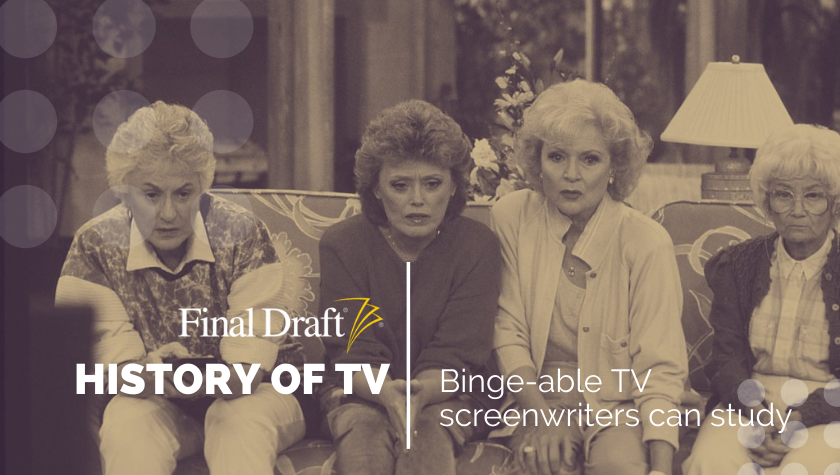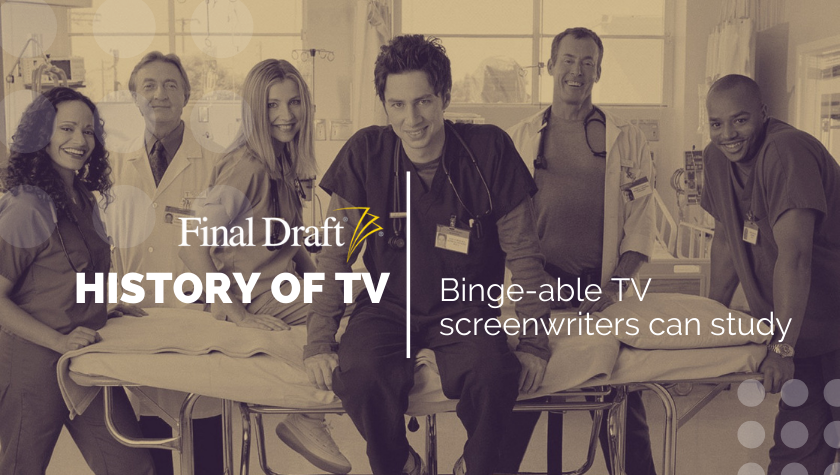History of TV: Paging Dr. Ross Back to the 'ER'
February 25, 2021
Whether you watched it back in the day or not, you knew the show: ER. NBC’s undeniable ‘90s hit ran a marathon 15 seasons, becoming the epitome of that decade’s “must-see TV” and paving the way for many a medical show to come (you’re welcome, Dr. Grey).
Did you know it was a book first? A Michael Crichton one, at that. The Harvard Medical School grad wrote it long before Jurassic Park was a thing, but it was continually passed over for being too technical and fast-paced. Thankfully for audiences, producer Steven Spielberg (along with original showrunner John Wells and NBC) didn’t feel the same; or at least he saw the value in those aspects to making an explosive little piece of television history.
The makings of event television
As much as it was an unflinching look at the medical field — they “let” patients die! And main characters! (I know, we’ve all suffered Game of Thrones so that shouldn’t feel shocking, but it was back then) — ER also layered in complex character dynamics to elevate the real drama that unfolded in the emergency room to soap-operatic levels. The show set a high bar, bringing the spectacle of film to the small screen.
This was the pre-9-1-1 era, keep in mind. Exploding helicopters, serial killers, and hostage situations still felt new and exciting. The fast-talking staff of Chicago’s County General Hospital encountered many such a heart-stopping case, and by many, I mean a new one for nearly every of the 331 episodes. It wasn’t just the fictional doctors taking risks either, but the production as a whole; like when they did that live episode for season four’s opener not once, but twice; once for each coast.
The behind-the-scenes glimpse of these medical professionals’ high-stakes, stressful environment inherently created a wealth of storylines. They tackled every issue of the day they could, sadly some that still resonate today: racism, substance abuse and domestic violence. Every patient, from a broken arm to the dying, was treated with the same urgency, the doctors and nurses themselves undergoing their own health trials at times. Each storyline was delivered with so much heart that despite the vast differences between their lives and most of ours, we could still relate to their triumphs and pain. We were made to fall in love with the characters, so seeing them go through what they did was downright nail-biting at times. On a lighter (not to diminish matters of the heart) note, I think a collective sigh rang out when Nurse Carol Hathaway (Julianna Margulies) and Dr. Doug Ross (George Clooney) finally got their happy ending in a “for good” way, as television allows.
Ensemble casts
Margulies and Clooney were just two of the rotating cast that kept ER fresh and interesting, and whose storylines kept audiences coming back for more than their medical prowess. Those personal goals, missteps and journeys grounded the show while simultaneously giving it its soap-opera flair.
While ER was undoubtedly the fuel for Academy Award®-winner Clooney’s rocket to stardom, the rest of the cast was crammed with A-list talent: Anthony Edwards, Eriq La Salle, Ming-Na Wen, Noah Wyle, Maria Bello, Alex Kingston, Goran Visnjic, Parminder Nagra, and so, so many others. Big-screen talent Angela Bassett and Susan Sarandon stopped by, as did Ewan McGregor, crossing media — something that wasn't really done back then.
It was something ER did very well; become more than this character or that. It was the culmination of everyone’s part — the emergency room itself was the main character through which all the rest merely passed, and we were lucky enough to catch a glimpse of it. Not only did the cast turn over, but the show went through multiple showrunners while managing to maintain its essence. The magic was in the collaboration.
Making art out of achievement
And all of that was achieved before TV had pulled ahead as the place for stars of that caliber. ER lived in an era where programming played second fiddle to commercials on network television and all of the artistic accolades went to the big screen.
But within the opening minutes of the pilot, ER was about to change all of that. We were introduced to a very humanized emergency room doc (he was napping; on the job, no less) just before a building collapses, which sets off rapid-fire medical jargon and pure chaos (hats off to doctors of all kinds everywhere). The pace is fast and it never really did let up, kind of like what we imagine it to be like in a real emergency room. Chaos, with moments of human interaction and the occasional shuteye. It was something special. So special, it even attracted Quentin Tarantino for a directing turn, fresh off his Pulp Fiction Oscar® win (and all those stars we talked about earlier).
In retrospect
ER brought together an incredible cast and crew of talent to create a moment of TV history that lasted more than a decade. They were nominated for 124 Emmys® (winning 22 of them), along with a People’s Choice Award for Favorite Television Dramatic Series seven years running, among others. The critics loved it, the people loved it, and while it wasn’t perfect, it was a pretty damn good multifaceted piece of art that any screenwriter could learn a lot from.
Written by: Karin Maxey
After seeing her first big screen movie 007: License to Kill at age six, Karin naturally became obsessed with writing action-infused stories. The next time she’d see Benicio del Toro was in person, at the 68th Cannes Film Festival—he was there for the Sicario red carpet, she was there for her first produced short film in the basement of the Palais…same-same. In between, Karin earned a Creative Writing Degree and landed management at Echo Lake Entertainment. Her scripts have been a Big Break Top 3 finalist, HollyShorts Film Fest Official Selection, and a multi-Screencraft competitions semi-finalist. Karin is also a screenplay editor who delights in the process of polishing writers' work for submission. You can find her at www.writergirlkarin.com.- Topics:
- Discussing TV & Film




